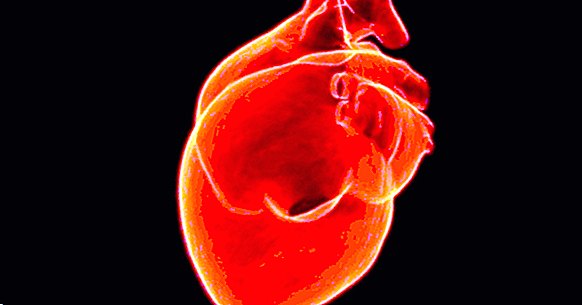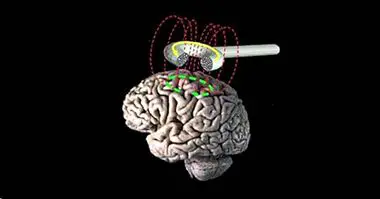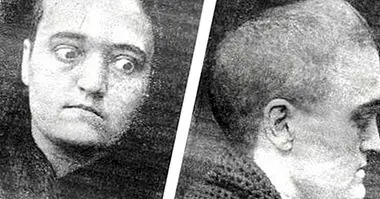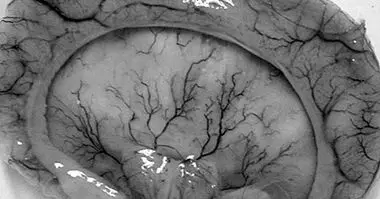Types of tachycardia: symptoms and possible causes
We have all felt on one occasion that our hearts speed up. We see someone who attracts us, we are nervous or stressed, we have an anxiety crisis, we exercise ... our heart accelerates to a greater or lesser extent in all these cases.
However, sometimes this acceleration is excessive and even dangerous, exceeding normal values and may require medical intervention. We are talking about tachycardias. In this article we will see the main types of tachycardias , its symptoms and possible causes.
- Maybe you're interested: "The 11 types of headache and its characteristics"
Tachycardia: concept and symptoms
We understand by tachycardia all that acceleration or increase in heart rate that exceeds the values considered normal . This value usually hovers around one hundred beats per minute in adult subjects. Thus, people who had a heart rate above one hundred beats per minute would suffer tachycardia, and could reach up to about four hundred. It is an arrhythmia or alteration of heart rate, as well as bradycardia (although the latter would be the opposite of tachycardia, that is to say, in bradycardia the heart rate slows down while in the tachycardia it accelerates).
The exaggerated increase in heart rate causes the heart to pump blood too quickly , not being able to transport enough oxygen to the rest of the body. While most of those that occur do not involve serious damage, they can reduce the life expectancy of the heart muscle and can predict and even cause myocardial infarction.
Some of the typical symptoms of tachycardia are the presence of dizziness, feeling of suffocation and weakness (due to lack of sufficient oxygen), as well as breathing difficulties. The presence of palpitations, tremors in the thorax and pain in this is frequent.
The tachycardia also can cause alterations in the level of consciousness , including syncopes or fainting. However, in some cases the tachycardias are asymptomatic, which carries the risk of detecting them too late.
- Maybe you're interested: "The 9 types of migraine and their symptoms"
Risk factors and possible causes
The human heart is an organ that can be affected by a large number of both physical and psychic elements. In this way, the presence of some type of arrhythmia or alteration of the heart rate such as tachycardia It can have very different origins . These are the most frequent causes.
- Hypertension
- Arteriosclerosis
- Coronary diseases
- Lung diseases
- Substance abuse
- Electrolyte imbalance
- Tumors
- Infections
- Excessive physical efforts
- Anxiety or excessive stress crisis
- Administration of antiarrhythmic drugs
- Lack of oxygen
- Scars in the heart muscle
- Problems with the thyroid
- High cholesterol
- Diabetes (in some cases of hypoglycaemia)
Different types of tachycardias
There is a wide variety of elements that can cause a tachycardia. These elements cause some kind of Morphological or functional alteration of the parts of the heart . Thus, we can find the following types of tachycardia.
1. Sinus tachycardia
This type of tachycardia is what usually occurs during episodes of anxiety, during states of anemia, in people with heart failure, after exercise or after consuming substances such as alcohol. Does not require treatment in itself, although it is necessary to influence the element that caused it.
2. Supraventricular tachycardias
It is an acceleration in the heart rate whose origin can be found in alterations in the functioning of the atria, the upper chambers of the heart. They can also occur due to problems in the atrioventricular node, the node that unites the atria and ventricles. There are different types of supraventricular tachycardias , as may be the following.
Atrial tachycardia
These types of tachycardia occur in a specific area of the atria. They have a long duration and are usually complicated to eliminate . They tend to be derived from chronic conditions such as bronchitis, and they need to be treated medically or surgery may be required to restore normal functioning.
Atrial fibrillation
During an episode of atrial fibrillation the heart rate begins to accelerate, presenting irregular changes in the heartbeat pattern . It is frequent in the elderly.
It is the most frequent type of arrhythmia, which may or may not cause symptoms. However, it is linked to the appearance of thrombi and ischemic accidents.It must be treated pharmacologically both to stop the arrhythmia and to reduce the possibility of new episodes and possible thrombi.
Auricular flutter
It is a type of tachycardia in which there is an increase in heart rate, reaching around 150 beats per minute on a regular basis. It is caused during the process of atrial reentry , a phenomenon in which part of the heart has not been activated in time with the rest of the organ and acts causing a greater number of beats to provoke new ones.
Paroxysmal supraventricular tachycardia
This type of tachycardia is also due to alterations in the atria, but in the case of paroxysms, the acceleration of the heart rate begins and ends in a search.
In this case they usually cause symptoms and do not go unnoticed, causing shortness of breath, chest pain, malaise and palpitations . They usually occur due to the phenomenon of reentry described above. It treats the presence of the arrhythmia from vagal or pharmacologically stimulation, in addition to requiring preventive measures to avoid future cases.
Within this group we can also find the nodal reentrant tachycardia and tachycardia with the participation of the accessory pathway, these two cases being due to alterations in the atrioventricular node.
3. Ventricular tachycardia
They are due to problems originated in the ventricles. This type of tachycardia is considered malignant, since they present certain danger for life . They are more common than supraventricular tachycardias in people with heart disease.
Within this group we can find several types of tachycardia, among which the following are included.
Ventricular extrasystoles
There is a problem or alteration in a specific point of the ventricle. Said alteration causes the heartbeat to go ahead compared to usual , with a small pause until the next normal beat arrives. They may not give symptoms, and if they do not occur in patients with heart disease they usually do not have a bad prognosis, although in cases where they cause discomfort they can be treated medically.
Sustained ventricular tachycardia
Due to problems or an alteration in the functioning of the ventricles, the heart rate rises to levels outside of normal continuously. It is one of the most dangerous to death . They tend to cause loss of consciousness and obvious symptoms such as dizziness, pain and palpitation.
This type of tachycardia usually indicates the presence of heart disease, which should be investigated to prevent future outbreaks. This type of tachycardia can be treated with a defibrillator to recover the normal rhythm or with drugs. It may require surgery to install internal defibrillators to avoid possibly deadly arrhythmias.
Nonsustained ventricular tachycardia
Sometimes episodes of short tachycardia occur that they end spontaneously . In the case of non-sustained ventricular tachycardia, a set of consecutive impulses are given that yield in less than thirty seconds. If there is heart disease, it is usually linked to a bad prognosis and should be followed up and preventive treatment. There is a possibility of sudden death.
Ventricular fibrillation
It is a type of life-threatening tachycardia, it is common to lose consciousness during it . The beats of the heart stop presenting a fixed pattern, not having an effective frequency but the organ beats in a disorganized way, with different intensity and with a variable temporal separation between beats.
Bibliographic references:
- Goldberger, A .; Goldberger, Z. & Schvilkin, A. (2006) Clinical Electrocardiography: A Simplified Approach, 7th ed. Philadelphia: Mosby Elservier.
- Uribe, W., Duque, M. & Medina, E. (2005). Electrocardiography and Arrhythmias. Bogotá: P.L.A. Export Editores Ltda.



















